Summary of Climate Disasters on the Planet from September 25 to October 1, 2024
Tropical Hurricane John
“Zombie storm” John turned into a nightmare for the residents of Mexico, hitting the country twice within one week. The term “zombie storm” is used to describe systems which dissipate only to regenerate again.
John first struck the state of Guerrero on September 23 as a Category 3 hurricane with wind speeds reaching up to 193 km/h (120 mph). The hurricane caused significant destruction, but that was just the beginning. After nearly dissipating and moving back into the ocean, it unexpectedly regained strength and returned with even greater fury.
This time, extreme rainfall was the main issue, pounding the states of Guerrero and Michoacán.
Some areas received nearly 1,000 mm (39 inches) of rain.
Acapulco was particularly hard hit, with 19 districts of the city flooded. Water filled homes, cars, and streets, turning roads into raging rivers that swept away everything in their path. The airport was also flooded and had to be shut down.

Tropical Hurricane John caused significant damage to infrastructure, Mexico
In some areas, floodwaters reached depths of up to 1.5 meters (5 feet). Local residents were wading waist-deed to escape the flooded areas. Numerous rescue operations were carried out using boats, jet skis, and helicopters.
The city government called on everyone with boats or other watercraft to provide them for rescue operations in the affected areas.
Residents of Acapulco are in despair. They still haven't recovered from last year's Category 5 hurricane, Otis, which caused massive destruction. However, eyewitnesses say that this time, the situation is even worse.
The amount of rainfall generated from Hurricane John exceeded 950 mm (37 inches), which is three times more
than the rainfall from Hurricane Otis last year, which had brought over 350 mm (14 inches) of rain to Acapulco.
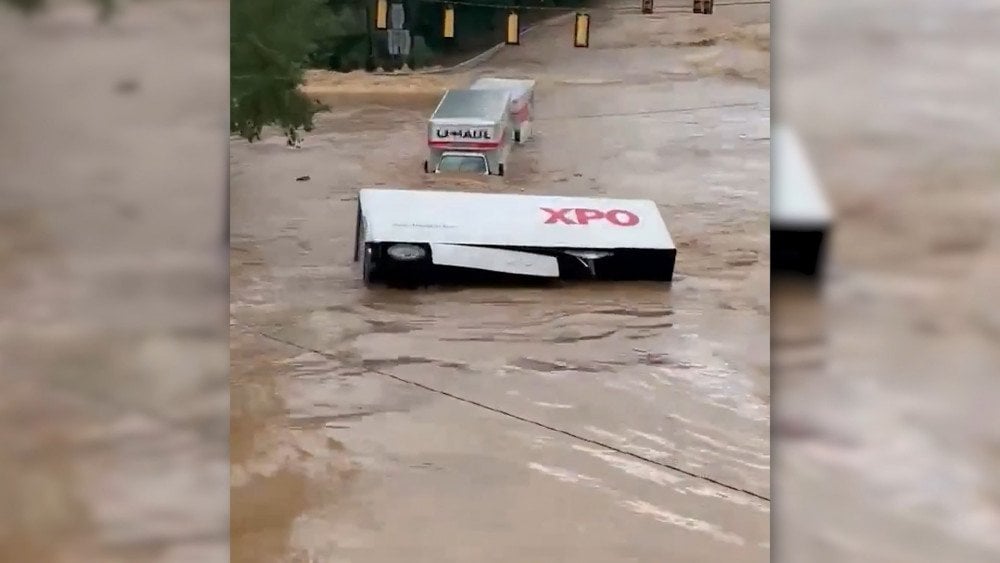
Extreme rainfall turned streets into rivers, Mexico
As of October 2, 2024, Hurricane John had claimed 29 lives.
Typically, tropical hurricanes do not make landfall near Acapulco. In the entire history of observations, only three hurricanes have struck the Mexican coast in this region, and two of them have hit within just a year (Hurricane Otis in October 2023 and Hurricane John in September 2024).
Nepal
On September 26, multiple floods and landslides occurred in eastern and central Nepal due to torrential rains.
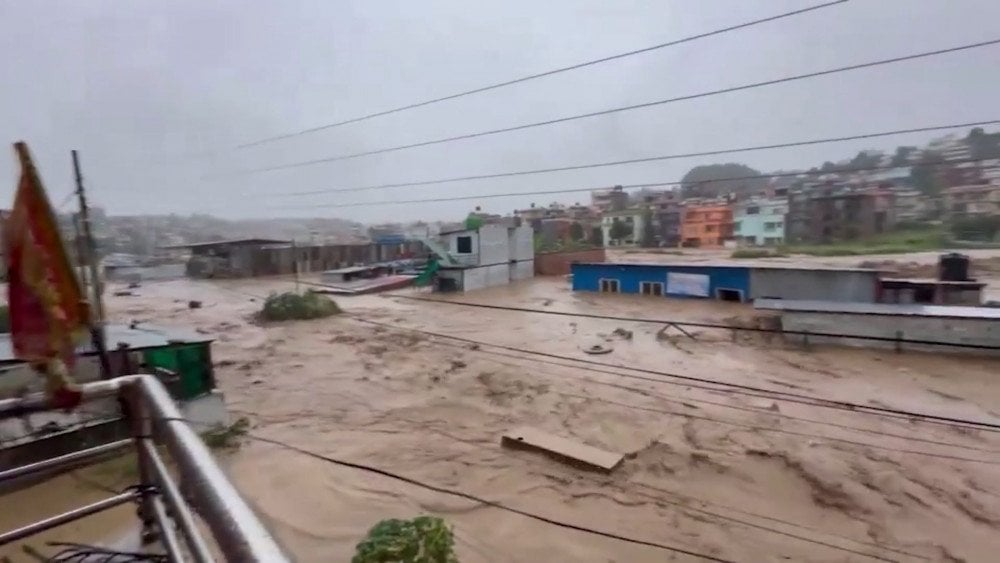
Raging water flows after record rainfall sweep away everything in their path, Nepal
Several days of extreme rainfall led to tragic consequences. As of October 1, 2024, 217 people had died, and 111 have been injured.
More than 3,000 rescue workers were involved in search operations across the country, with helicopters and motorboats being used to evacuate people.
Twenty-five weather stations in 14 districts recorded record rainfall levels. An official from the Department of Meteorology noted that such intense rainfall occurring simultaneously in different regions of the country is a rare and shocking phenomenon.
The highest rainfall was recorded in the village of Daman, Makwanpur District, where 410 liters (16 inches) of water per square meter fell in just one day. In the capital, Kathmandu, a new all-time rainfall record was set. According to the Department of Hydrology and Meteorology, 323 mm (13 inches) of rain fell in one day.
As a result, 2,200 homes were flooded, and nearly all roads leading into the Kathmandu Valley were blocked. Two patients died on their way to the hospital because the ambulances transporting them had to stop midway due to landslides and flooding.
Across the country, 54 schools and 23 highways were damaged, including the strategic Narayanghat-Mugling highway, a critical route for Nepal.
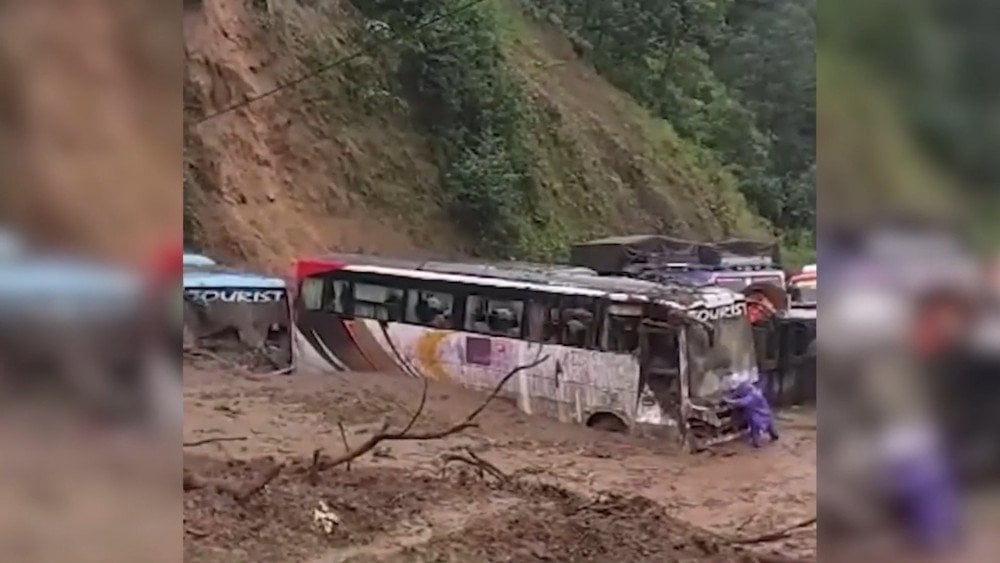
Landslides blocked the road, Nepal
Damage to infrastructure also caused power outages. The natural disaster destroyed a bridge connecting Nepal and China over the Bhote Koshi River, near the Tatopani customs post. This halted freight transportation along a vital trade corridor, which could have a significant impact on the region's economy.
Russia
A powerful storm struck the Moscow region on the evening of September 28, turning several hectares of forest into a real mess of fallen trees.
The storm triggered at least two tornadoes.
The village of Berezino in the Klin district was hit particularly hard by the destructive vortex. Dozens of power poles and hundreds of trees were downed, around 70 roofs were torn off homes, and some stone buildings were destroyed. The tornado knocked down a cell tower, leaving it as a twisted heap of metal.

The tornado knocked down a cell tower, leaving it as a twisted heap of metal, Berezino village, Klin district, Russia
Several people were injured, and one woman died due to a fallen tree.
The European Severe Weather Database (ESWD) classified the tornado in the Moscow region as an IF3, equivalent to an EF3 on the Enhanced Fujita Scale.
Tornadoes of this strength in the fall, particularly in temperate latitudes, are absolutely abnormal phenomena.
On September 29, powerful dust storms hit southern Russia, affecting the Astrakhan, Rostov, Volgograd regions, Stavropol, Kalmykia, and Dagestan. Winds reaching up to 28 m/s (62 mph) spread dust over a vast area, nearly 1,000 km (620 miles) wide.
The worst hit was Kalmykia, where dust reduced
visibility to just a few meters (feet).
Drivers had to navigate almost blindly, and the strong wind caused power outages by damaging electrical lines.
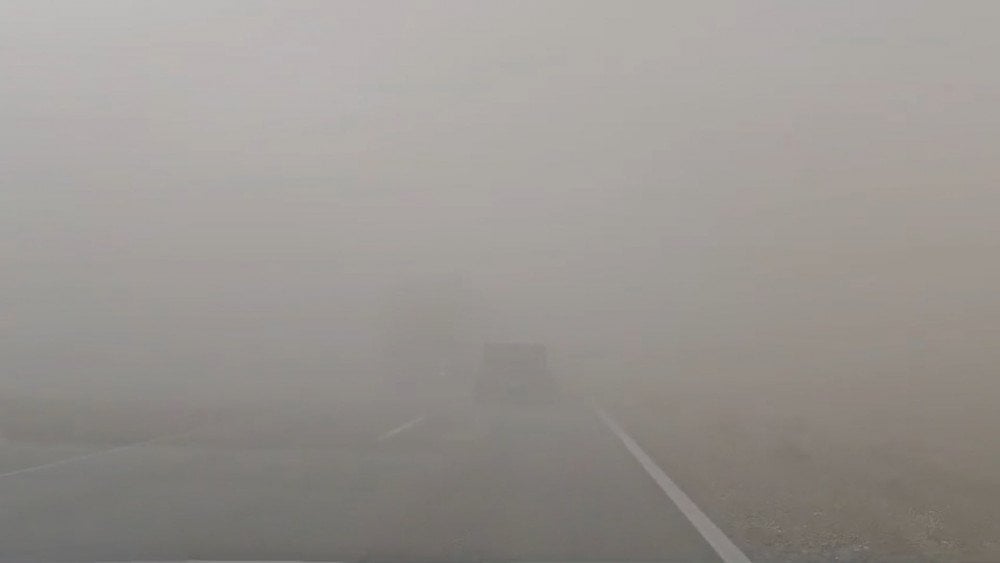
Drivers had to navigate almost blindly due to the dust storm, Russia
It is worth noting that this was already the second dust storm in the region within a month; a similar event was observed on September 2 in the Rostov region and Stavropol.
Such a frequency of powerful dust storms in autumn is highly unusual, as they typically occur in the spring.
China
On September 28, a waterspout appeared over Hong Kong’s Victoria Harbour, marking the first recorded occurrence. According to the Hong Kong Observatory, this is the first occurrence of such an event in the harbor since records began in 1959.
The waterspout was spotted at 12:30 p.m. local time in the harbor, near the Laguna Verde Ocean residential estate in Hung Hom. A few minutes later, after hitting a wall near an outdoor pool, the waterspout weakened and dissipated.
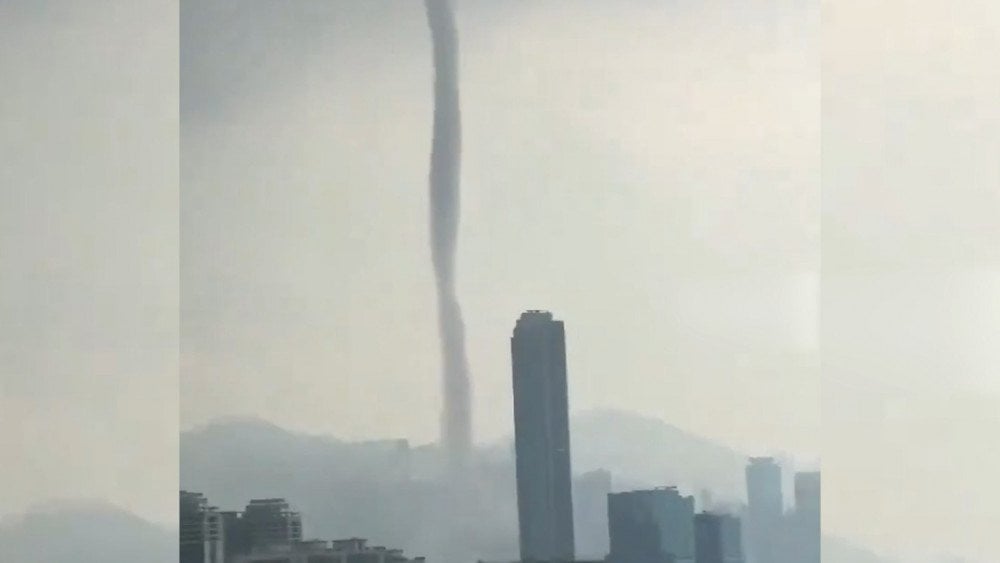
A waterspout appeared over Hong Kong’s Victoria Harbour, marking the first recorded occurrence, China
Former Observatory chief Lam Chiu-ying noted that it was fortunate parents and children who were at the pool were not at sea as the outcome could have been disastrous.
Iran
In late September, northern provinces of Iran experienced an unexpected first snowfall and a sharp cold snap, which was a true anomaly for this time of year.
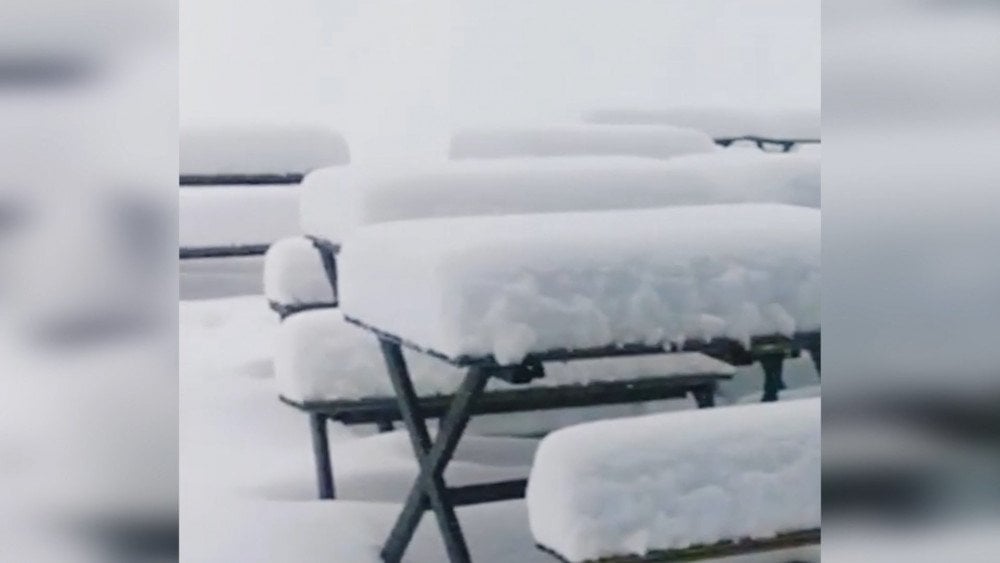
Northern provinces of Iran experienced an unexpected first snowfall and a sharp cold snap
In the province of Ardabil, where autumn weather is usually warm, with an average minimum temperature of plus 11 °C (52 °F), a record low of minus 1.9 °C (29 °F) was recorded.
Belgium
On September 26, Belgium was hit by two unexpected tornadoes. They occurred between 5:45 p.m. and 6:15 p.m. local time and caused significant damage. The first tornado traveled almost 8 km (5 miles) through the eastern part of Flemish Brabant province, while the second, more powerful tornado, struck the provinces of Walloon Brabant and Flemish Brabant.
The strength of this tornado reached F2 on the Fujita Scale.
It ripped roofs off buildings, uprooted power lines and trees, and lifted solar panels into the air. Eighteen homes across two provinces were damaged.
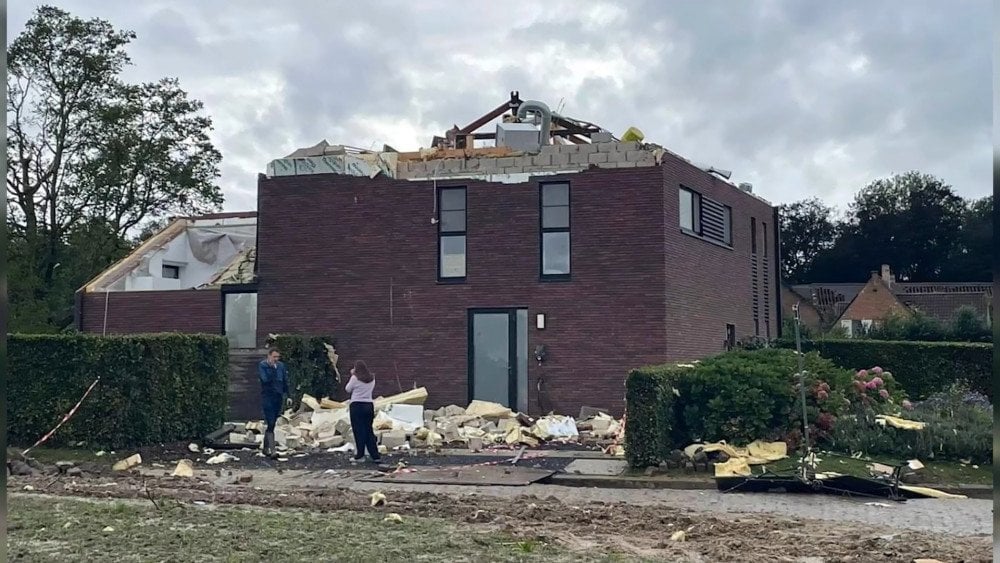
F2 category tornado ripped off roofs and partially destroyed homes, Belgium
According to the mayor of the municipality of Beauvechain, six families had to be relocated.
It is worth noting that tornadoes of this magnitude are extremely rare in Belgium.
Tropical Hurricane Helene
Tropical Hurricane Helene turned into a true ordeal for residents of the southeastern United States. On September 26, it struck Taylor County in Florida with winds reaching up to 225 km/h (140 mph), rapidly intensifying from Category 2 to Category 4 within just a few hours before making landfall.
Mandatory evacuations were issued in the region. The County Sheriff’s Office addressed people who chose not to evacuate, stating it was now too late to change their decision and advised them to “hunker down, stay put.” He also asked them to “take a black Magic Marker, write your name, your Social Security number, everything on your arm” so officials can identify residents in worst-case scenarios.
Nearly all buildings, boats, and vehicles in Taylor County were destroyed.
The hurricane wiped out even structures that had stood for decades.
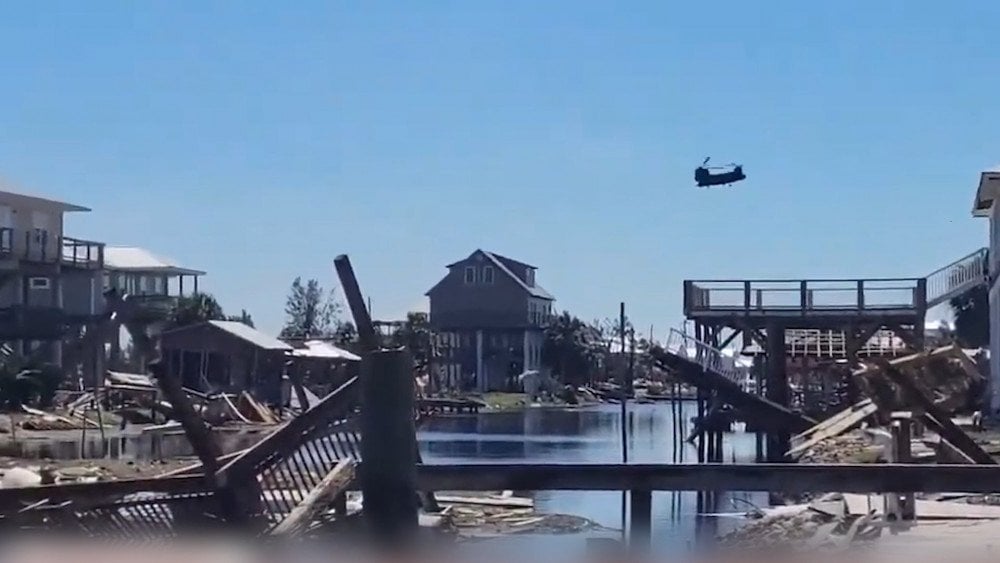
Tropical Hurricane Helene caused massive destruction in Taylor County, USA
In the Big Bend area, Hurricane Helene caused a catastrophic storm surge. In the small town of Cedar Key, water levels rose by more than 2.7 meters (9 feet).
For the region, this hurricane became the most powerful since records began in 1851.
By the next morning, Hurricane Helene downgraded again to a tropical storm, but continued to cause havoc as it moved northward through Georgia, bringing destructive rains and flooding. Atlanta
broke a 138-year-old rainfall record for two-day rainfall
at 282.4 mm (11 inches).
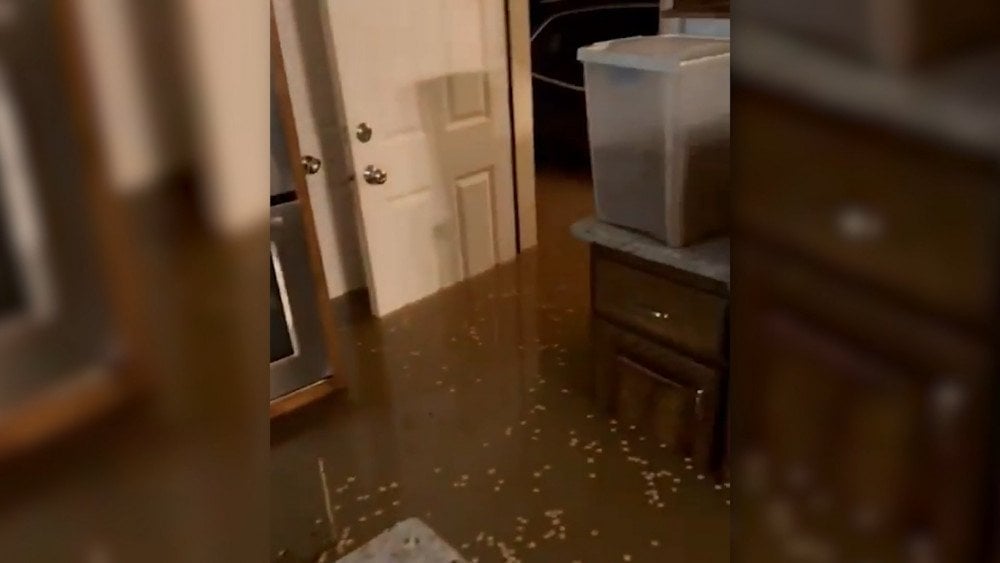
Flooded house in Atlanta, USA
This caused the first-ever Flash Flood Emergency in Atlanta. Water flooded the streets, cars floated down the roads, and people sought refuge on rooftops.
North Carolina and Tennessee also faced the brunt of the storm — heavy rains caused landslides and flash floods, damaging infrastructure. In Unicoi County, Tennessee, dozens of patients and staff had to be evacuated from the hospital roof using helicopters. According to the National Hurricane Center, Hurricane Helene caused the most severe flooding in North Carolina in the past 100 years. Spruce Pine was doused with over 2 feet (0.6 meters) of rain. Key highways in the western part of the state, including Interstate 40, were closed.
The city of Asheville suffered catastrophic damage, with nearly 94,000 residents cut off from the rest of the world due to destroyed roads and widespread power outages. Humanitarian aid, including food and water, didn’t start arriving until several days after the disaster.
It is important to note that Asheville was considered one of the safest places in the U.S. to escape destructive climate events. The media referred to it as a “climate haven,” and people from different regions of the country were moving there in search of refuge.
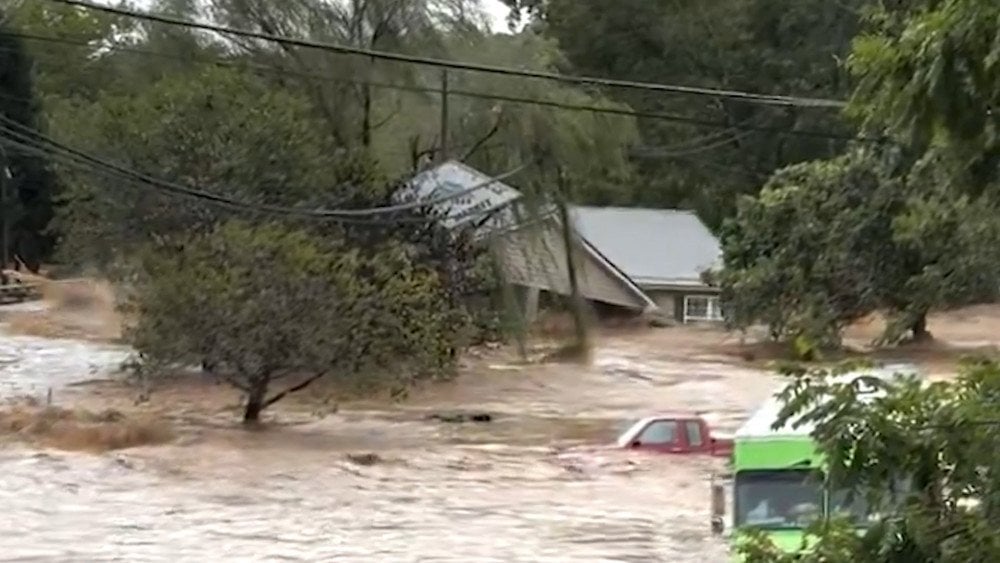
The city of Asheville, once called a “climate haven” by the press, found itself underwater, USA
Hurricane Helene devastated entire states and turned vast areas into disaster zones. In total, more than 5.5 million homes and businesses were left without power. According to PowerOutage.us, as of October 1, 1.5 million customers were still without electricity.
The deadly hurricane claimed at least 162 lives across six states: Florida, Georgia, North Carolina, South Carolina, Tennessee, and Virginia.
Another 600 people were reported missing as of October 2, 2024.
Preliminary estimates suggest that the economic damage from Hurricane Helene could reach an astonishing $160 billion.
The world has changed! It will never be the same again. The climate crisis intensifies.
Facts are stubborn, and statistics show a clear progression of climate disasters. Asheville, once considered a climate haven, has become the epicenter of a climate catastrophe. This proves, yet again, that there are no longer any safe places on Earth.
If we want to survive, addressing the problem of escalating catastrophes must become the number one priority for all of humanity. In a world filled with division and conflict, this will only be possible when people begin to speak out en masse about the climate issue and create a united global demand for its solution. Right now is a unique moment when every person can contribute to forming this demand with simple actions on social media. The series of “Global Crisis” forums have compiled all available information about the planet's climate situation. Understand the problem and share it with others so they too can realize that our home is collapsing, but we still have a chance to stop this.
It's time to stop ignoring reality and start taking action while we still have a chance to save ourselves!
You can watch the video version of this article here:
Leave a comment